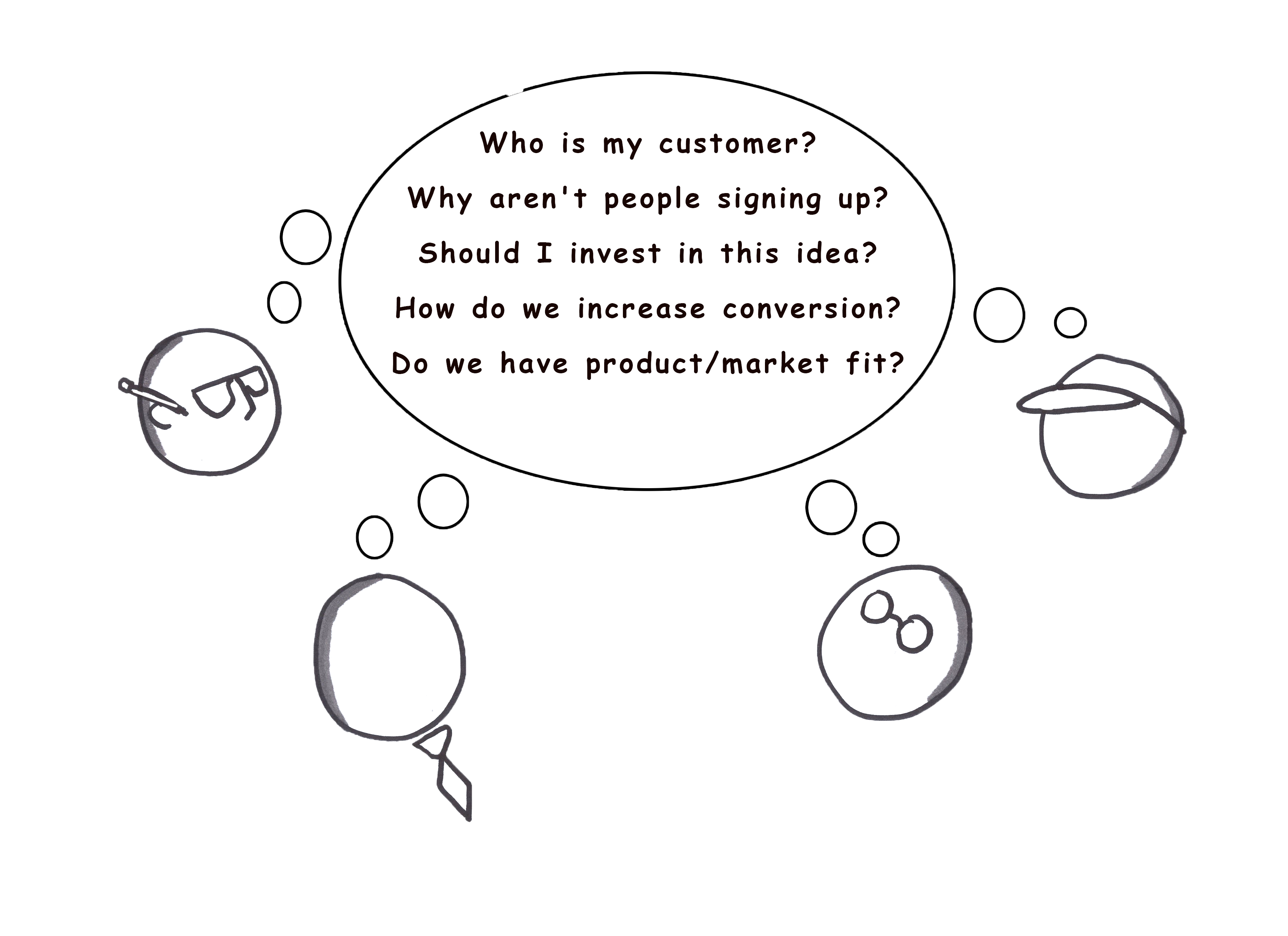Who Is This Book for?

If you’ve ever recognized a giant gap or unanswered question in your business model and had no idea how to go about filling it, this book is for you. You may be asking:
- Who are our customers?
- What are the most important features of our product?
- Why are people doing that with our product?
- Will people actually pay for this?
This book is for managing innovation projects where the business model is partially or completely unknown. Your job title might be:
- Product Manager
- CEO of an early-stage startup
- Entrepreneur-in-Residence
Previous Experience
This book will be most useful if you are familiar with concepts such as:
- Lean startup
- User experience
- Human-centered design/design thinking
- Business model innovation
It’s ok if you haven’t heard of any of these terms, but you’ll get more out of it if you have.
In particular, you should already buy into the idea that parts of your business model are unknown, and the way to figure them out is to do research and experiments out of the building and in the real world with your customers.
Innovation at Scale
This book is particularly useful for those managing or assisting in the management of large numbers of innovation products. This includes job titles like:
- Chief Innovation Officer
- VP of Innovation
- Accelerator Manager
- Lean Startup/Innovation Coach
If you are in any of these positions, this book serves as a versatile and quick reference guide for almost any startup you’ll be dealing with. It can also be used to diagnose typical startup problems.
This book is a Creative Commons project, which means you can use it as training material for your startups without any additional cost.
Business Model
This book is best used to answer questions about certain business-model elements, such as the customer, the value proposition, channel, relationship, and revenue. In other words, the critical elements in product/market fit.
While many of the methods listed here can be used to investigate other business-model elements such as partners and resources, it may take some extra effort on the part of the reader.
Stage and Industry
The methods here work fine for small, early-stage startups, and equally fine for teams in large companies trying something new, risky, and outside the normal business model.
These methods work for any industry, but there is a bias toward providing examples and case studies from the technology industry. Other industries will be included as case studies become available. Please send any case studies you'd like to include to [email protected].
Warning: Academics and Existing Businesses
This book is not for students trying to learn in a classroom environment. You’ll have to go out and use this book in the real world with real customers to get anything out of it. So if your teacher just handed this to you, get ready to get kicked out of the building to go talk to customers.
This book is also not for companies executing on an existing business model. While some of the techniques listed here work quite well for optimizing an existing product or service, it’s not designed for that. You’ll have to modify the techniques and make sure you’re considering potential side effects.
Continual Improvement
Future improvements may change or broaden the focus of this book. This is a living document that will be regularly updated.
